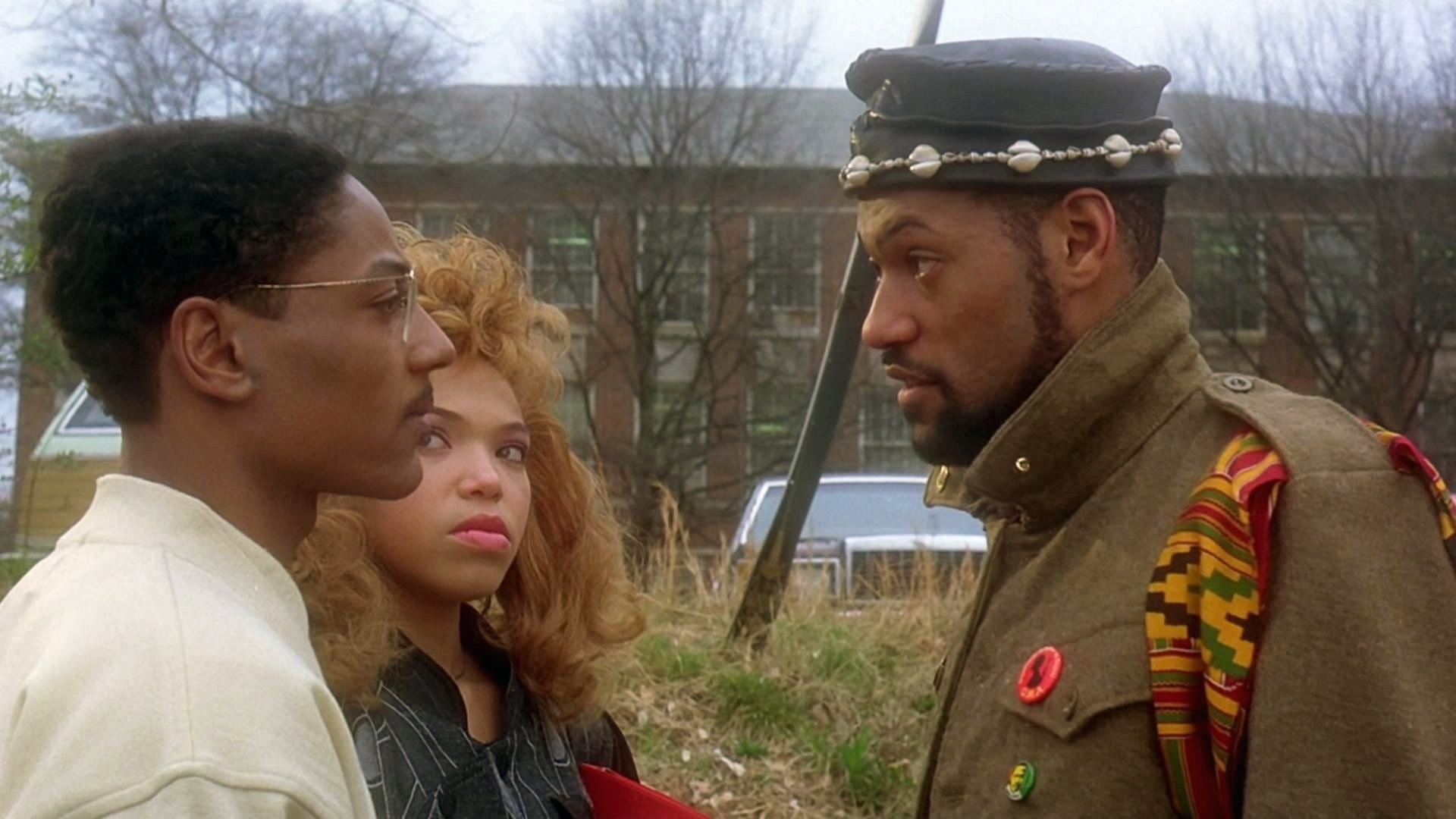
School Daze — Black College is Background
Examining cinematographer Ernest Dickerson’s close collaboration with writer-director Spike Lee and production designer Wynn Thomas on this ambitious musical-comedy.
This article was originally published in AC February 1988. Some images are additional or alternate.
Unit photography by David Lee, courtesy of Columbia Pictures
There have been plenty of films made about college life over the years, but writer-director Spike Lee’s School Daze is probably the first film to ever focus specifically on the Black college experience.
Based on Lee’s observations from his college days at Morehouse in Atlanta, the film explores the conflicts of class and color among students of a fictitious, well-established Southern Black school called Mission College. The action takes place over homecoming weekend, starting Friday night and ending Sunday morning.
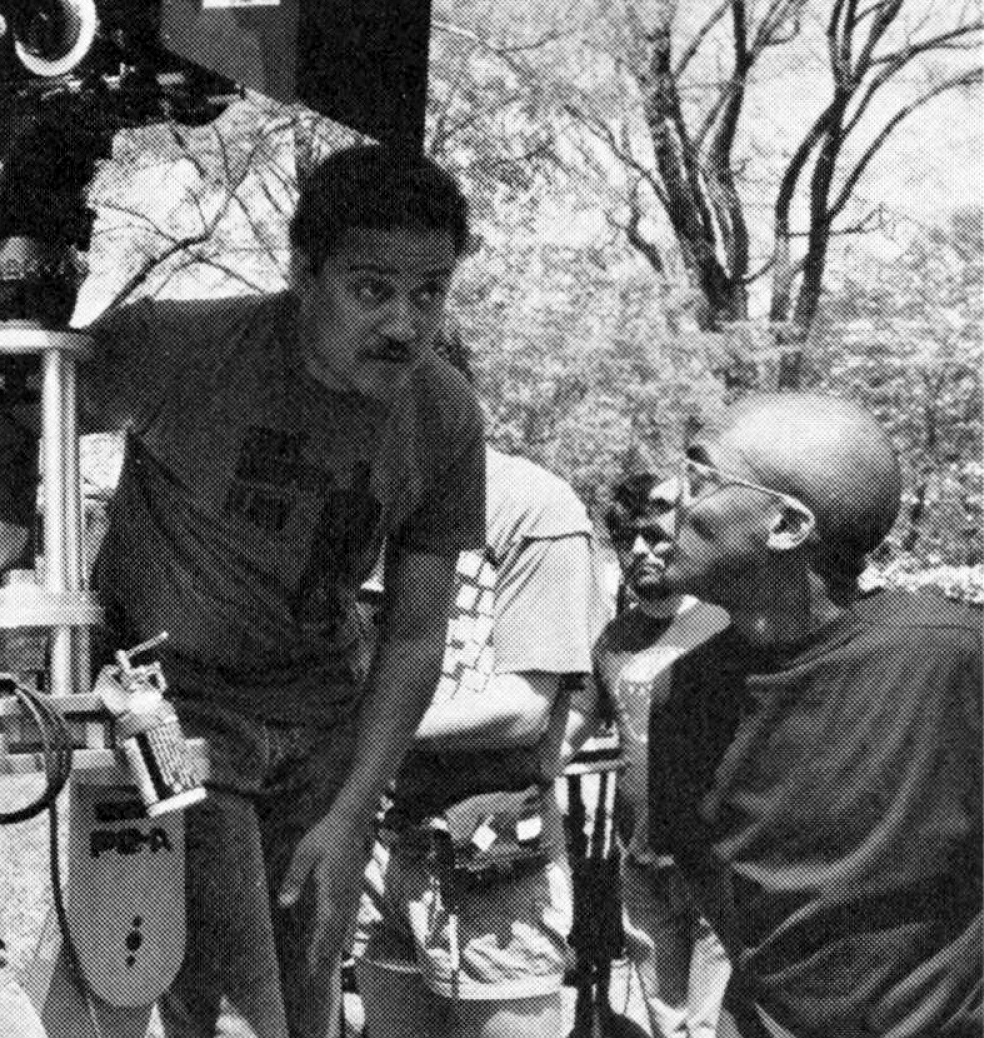
“School Daze is about student apathy and class divisions within the Black community,” said cinematographer Ernest Dickerson, who has collaborated with Lee on every one of his films since they were both graduate students at NYU Film School. Dickerson himself attended one of Lee’s schools traditional rivals, Howard University, in Washington, D.C. “Mission College has financial interests in South Africa, and the main character — Dap, played by Larry Fishburne — leads a campaign to persuade the school to divest them. However, most of the students either aren’t interested in his activist movement or don’t want to rock the boat. They just want an education in order to get a good job,” he describes.
The tension is heightened by class divisions. Dap and his friends, who collectively call themselves “the fellas,” come from poor backgrounds and are the first members of their families to attend college. As might be expected, they are the most politically aware, yet at the same time are afraid of making waves, especially when the embattled school president, played by Joe Seneca, threatens them with expulsion.
Dap’s cousin, Half-Pint (played by Lee), is trying to become a member of the elitist, upper-middle-class fraternity, Gamma Phi Gamma, headed by Julian (Giancarlo Esposito), who is a major antagonist in the conflict.
The Gammas, as fraternity members are called, are all children of successful Mission College alumni and are consequently more traditionalist than their poorer peers.
Although the tension builds up until Dap realizes he is “talking to a brick wall, for even his friends start questioning his motives,” the film ends on a high note. “Everyone comes together at the end of the weekend because they finally understand that they have one common identity: they are all Black Americans,’’ said Lee.
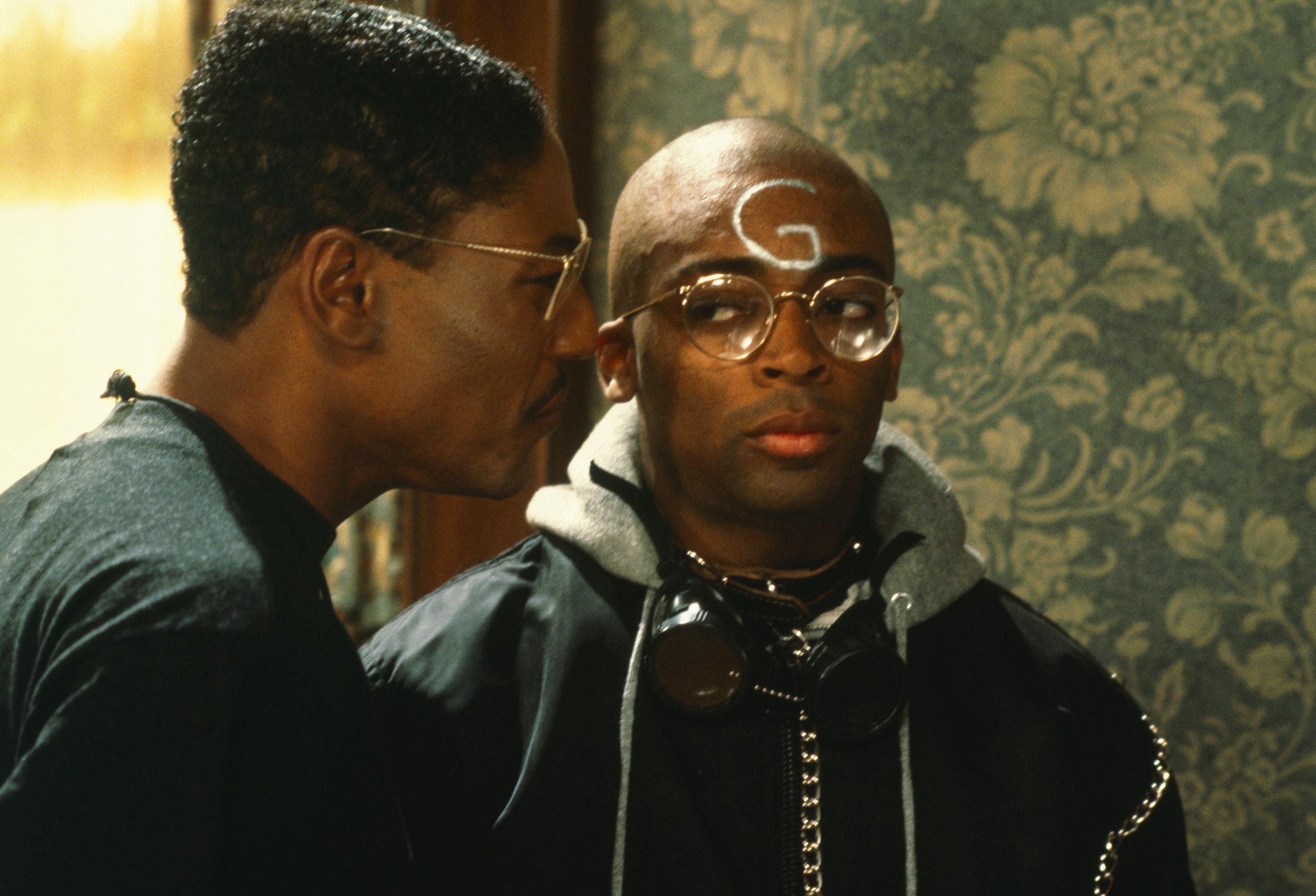
But don’t let the intensity of this story fool you. School Daze is a musical comedy in the Grand Old MGM Tradition (although it’s Columbia which is footing this bill). There are five main characters, 75 speaking roles and a cast of thousands — Dickerson manipulates his camera so 500 extras look like 5,000. There are also eight musical numbers and crowd scenes including one that stretches for a quarter of a mile into the darkness of the night.
This is quite a change from the low-budget independent movies that Lee, Dickerson and production designer Wynn Thomas have worked on before.
She’s Gotta Have It, which was Lee’s first and at that time Dickerson’s third feature film, astonished the film community in 1986 by being produced in 12 days on a total budget of $175,000. By the end of that year the film had grossed $7 million.
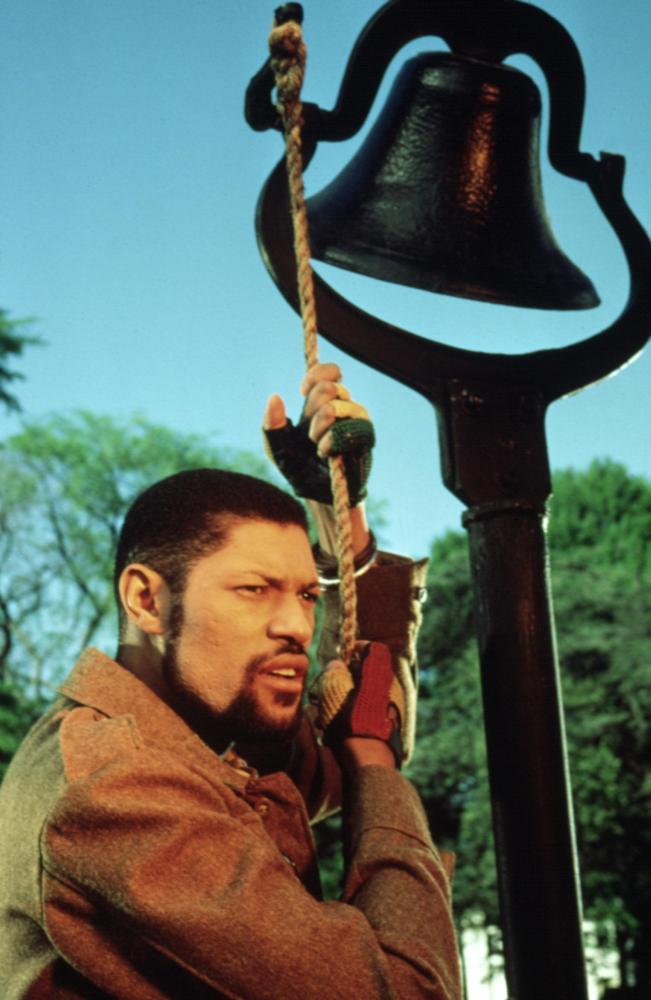
It was the critical success and profitability of this film that persuaded Columbia to put up $6 million to finance School Daze, which went into production in early March, 1987.
With such an enormous jump in film budget size even Lee admits that many people at the time openly wondered if he and his crew could handle it. Eight weeks later, when production ended on time, within budget and with no reshooting, it was clear they could.
Dickerson voiced a sense of technical and creative satisfaction from working with a larger budget and longer time frame than he had for his previous movies. “When I shot Brother from Another Planet in 25 days and Krush Groove in 24 days, it was a case of getting it done as fast as possible in the best way I could. Having eight weeks to shoot School Daze meant I had the time to put a lot more quality into each shot,” he said. Dickerson feels that the rigorous financial training of independent filmmaking helped the School Daze team create a “$6 million movie that looks like $15 million.”
“The overall look of the film is a heightened, stylized realism. What we are trying to say with School Daze is that here is a Black college that has a long history and tradition, as many of them do. This feeling of tradition influences the way everything looks: There is a sense of age; not a contemporary, modern environment. We gave it an “ivy league” look with a lot of wood paneled rooms,” said Thomas.
‘‘However, we had to remove it a little from reality in order to prepare the audience for the musical numbers that take place. The look is very controlled. Heightened. For instance, when we built the fraternity house we made it a little bigger than normal. Its an old Victorian looking building with dark, rich textures and colors, but the look is a little exaggerated,” he said.
Dickerson added: “We decided that the best way to capture the energy found in homecoming was to keep the camera moving. Shifting compositions and constant actor-camera choreography makes an energetic frame.
“I love this style of shooting because it makes dynamic cinema and frees the actors to let loose their energies in one take,’’ he added.
Approximately 75 percent of the film was shot in the Atlanta University complex. Lee’s old school refused permission to be filmed because it felt the audience might identify the college with the more negative aspects of the story.
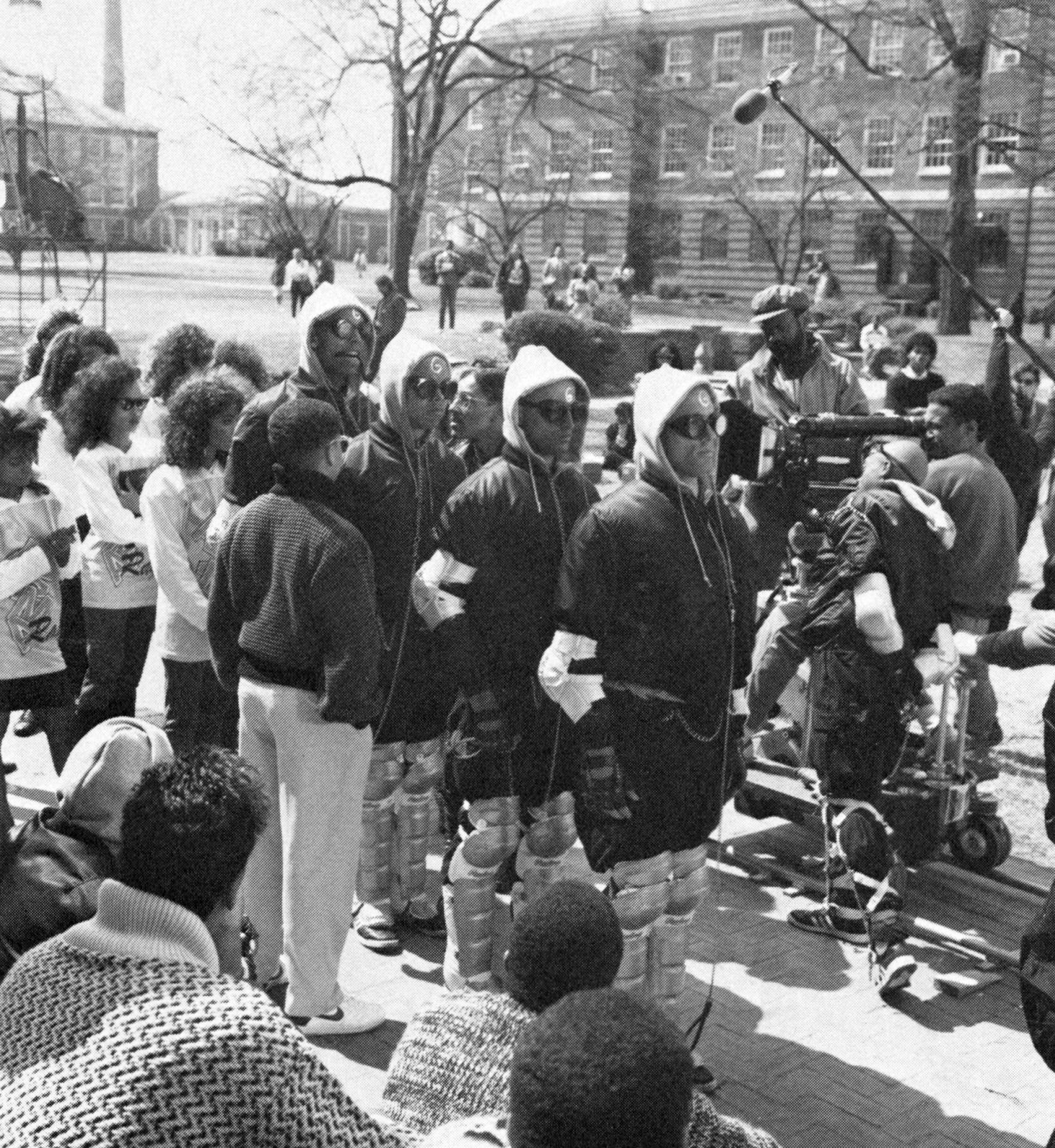
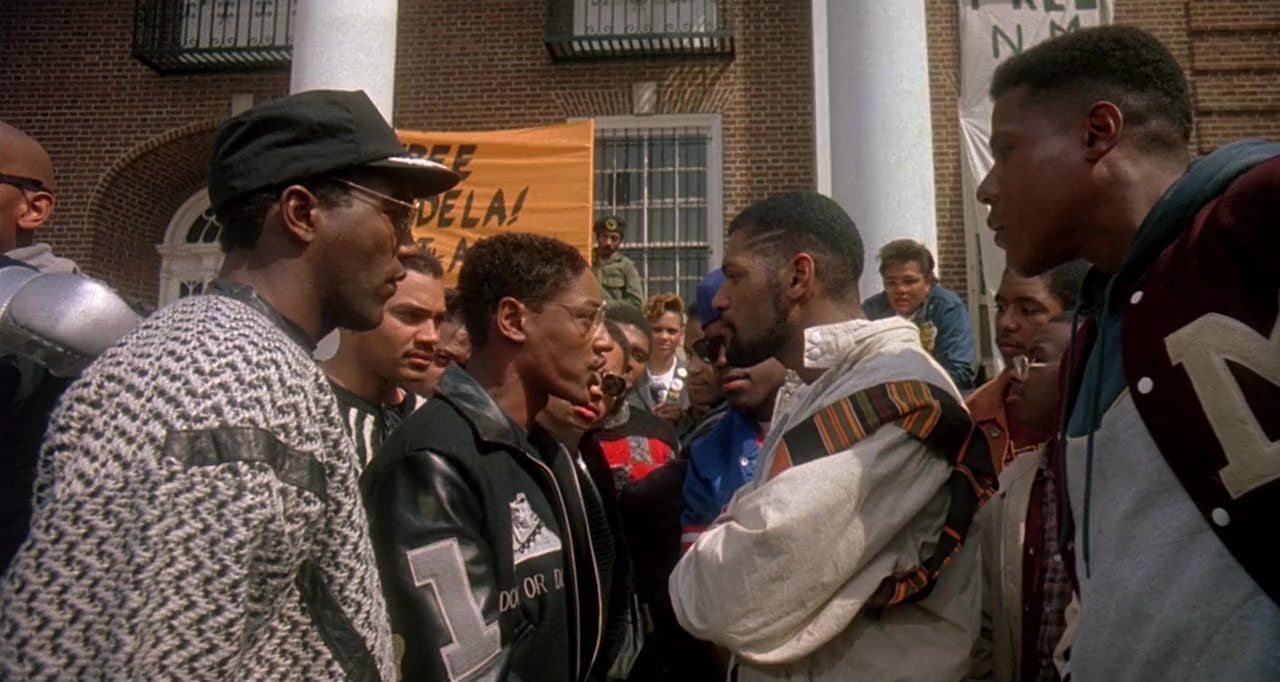
The stage of the old Fox Theater in downtown Atlanta was used for a series of major theatrical numbers, which included the crowning of the homecoming queen and two song and dance numbers.
In fact, most of the music springs out of situations within the story, such as the performances given at the theater. “There is only one number that springs out of nowhere in the manner of the old MGM musicals, and that is the number performed in a beauty salon called Straight ‘n’ Nappy,’’ said Dickerson. This scene and the Fox theater number, “The Sun is Rising,’’ are both shot in the manner of a 1940s Technicolor movie.
“Spike and I looked at a lot of old musicals, like West Side Story, An American in Paris, Singing in the Rain and the Busby Berkley films to see how the treatment of dance has changed since then.

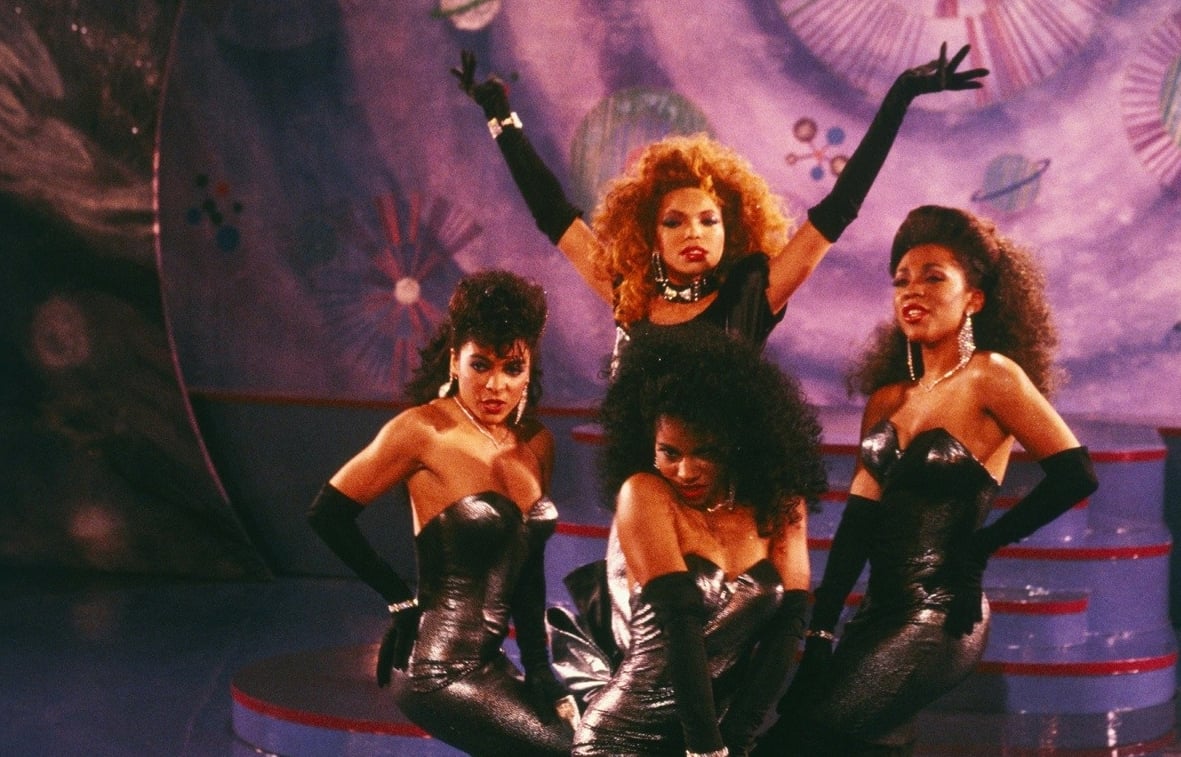
“It became clear that today there is a greater reliance on editing and close shots. In the MGM musicals the dancers were photographed full-figure, which to me gives credit to the dance itself. After all, dance is about body movement interacting with positive and negative space within the proscenium, which in our case is the frame of the film,’’ he added.
“Because the proscenium is often a stage in the MGM musicals, the dancers played primarily to an audience that was outside. There was very little camera movement around them.
‘‘We wanted to produce the same effects with Straight ‘n’ Nappy, and not rely on things like cutaways. We used fluid camera movements, tried to keep the dancers full figure and stayed with them as they moved. Occasionally we’d go in for closeups when something happened, but then we’d pull back for wider shots and let the dancers continue,” he said.
Producing a 1940s Technicolor musical look was not the only challenge facing Dickerson and Thomas with this number. The walls of the beauty salon where the warring girl friends of the two social groups danced their “battle” over whose hair was the best were completely covered with mirrors.
“Wynn, who designed and built the set, had the mirrors placed on swivels so wherever the camera pointed, the mirrors could be titled so they reflected another part of the set instead of the camera,” said Dickerson.
Twenty-four dancers, choreographed by Otis Sallid, were used in this scene, with the music and lyrics written by Lee’s father, Bill Lee, who also wrote the score.
Another feature of the film is the use of saturated colors coupled with “a subtle softness” in the images. “I mainly used Kodak 5247, with some 5294. I wanted 5247 because of the richness it has — its color saturation and fine grain,” said Dickerson “I wanted to get back to a more classical look. In order to capture the variety of images found within the film, I used an Arriflex BL4 with a combination of Zeiss regular primes and SuperSpeeds, as well as a Cooke 5: 1 zoom and one of the new Angenieux 10:1 zooms,” said Dickerson. “I stayed with the regular primes as much as possible because they give a softer image than the SuperSpeeds, for I wanted a certain softness to come out in the images. I also avoided stopping down past T5.6 in order to avoid getting too much contrast in the image. My average stop was T2.8, even on exteriors, except with the zoom.
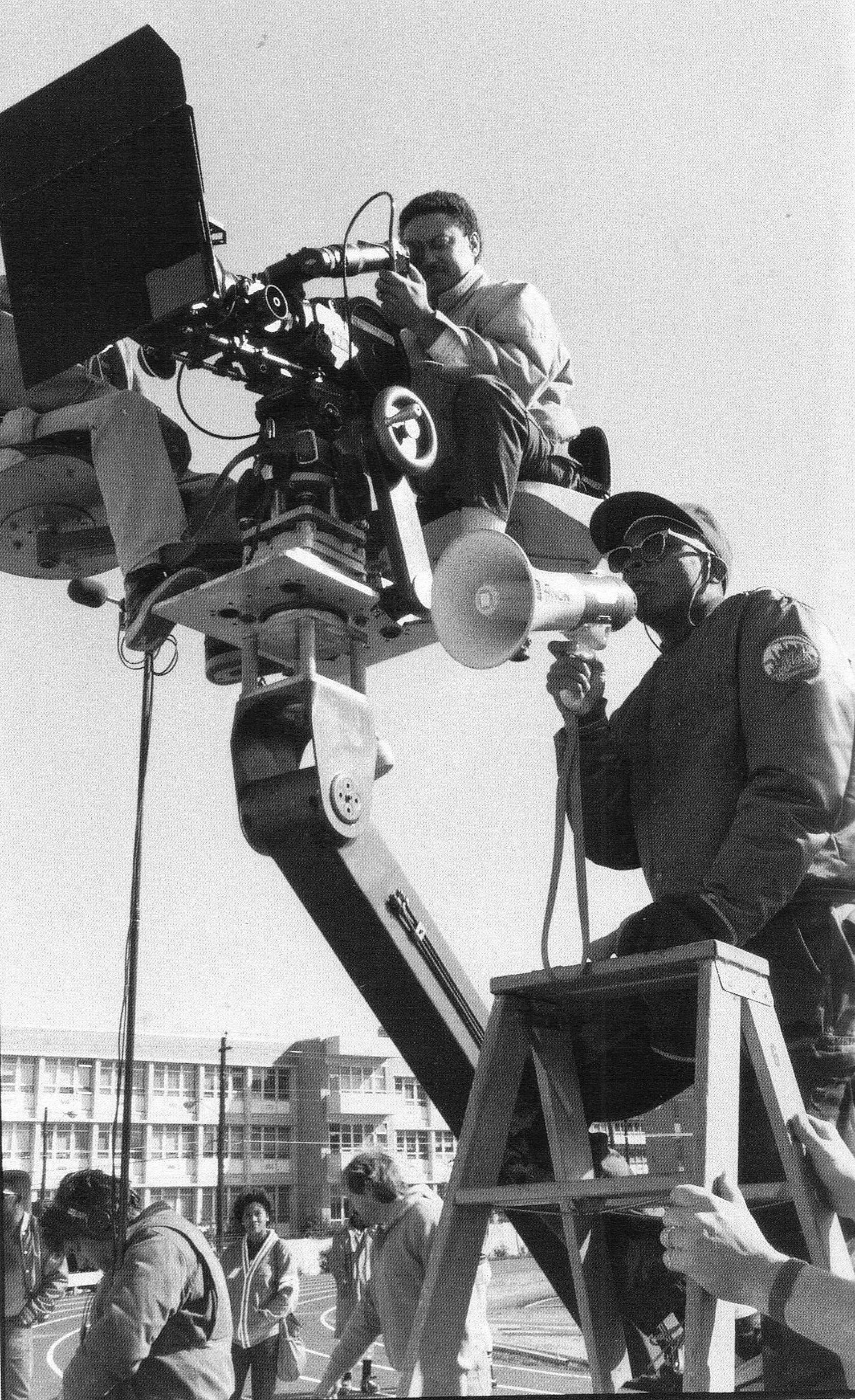
“I used a regular 85 filter on all exteriors, occasionally an 85 polarizer,” he added. Dickerson has used polarizers since his days as a still photographer. He worked as a freelance still photographer for three years prior to joining NYU Film School. “Polarizers let you play with color saturation by controlling sky and light reflections in objects.’’
Minor diffusion was also used to soften the image further by using a light black Superfrost filter. “It gave me a nice texture without milking up my blacks, and flares very nicely around hot highlights and light sources,’ he said.
Because the story takes place within 48 hours, Dickerson was concerned with getting the right colors to indicate different times of day. He also used lighting to enhance the wide range of different black skin tones found in the characters in the film.
‘‘Differences in skin color is a major theme in the film. Most black skin has a reddish and/or yellow undertone and I’ve found that black skins come alive under a warmer light. Consequently most of my lights were gelled with ‘bastard amber’ filters to warm them up. Also, my tungsten lights were on dimmers so they could be dialed down to warmer temperatures and I used gold reflectors instead of silver ones,” he said.
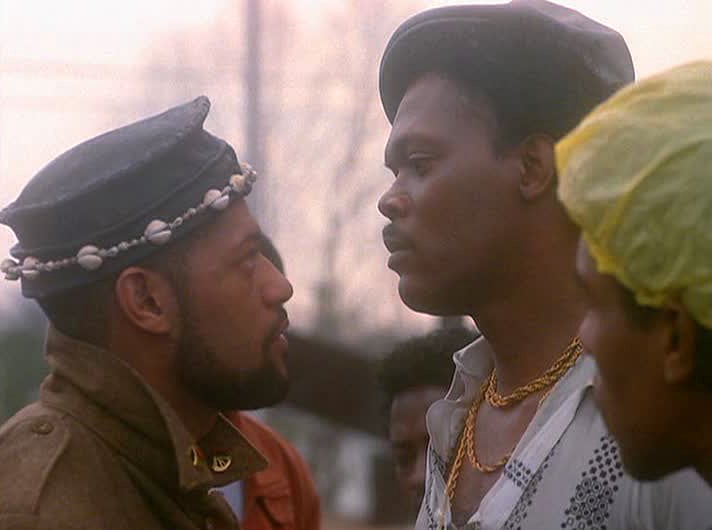
Dickerson added that many cinematographers cite problems photographing Black people because of the need to use more light on them. He feels that much of this problem can be alleviated by the deft use of reflective make up. “A light sheen from skin moisturizer is essential, not a lot, just enough to enhance its reflectivity. Also, you have to be careful about where you place highlights. I judged my exposures with reflected readings on Black people with a spot meter,” he said. ‘‘Because I wanted to capture all the subtle differences in black skin tones, I used Eastman Kodak’s 5247 with its tight grain and increased color saturation.
“I rated the 5247 for EI 100 in tungsten and EI 64 in daylight with an 85 filter. The 5294 used in night shots was rated at EI 320 for tungsten. My printing lights were in the high 30s and low 40s, as that way I was sure that my blacks will hold up to the release prints,” he added.
A juxaposition of contrasting colors is also found in many scenes. For instance, during the Death March scene, which takes place outdoors on the university campus at night, the contrasting orange light from flames and blue “moonlight” are the only two light sources. “The students wanting to pledge for the fraternity are getting ready for the final degradation, the final task, before they can join,” said Dickerson. They have to march slowly around the campus with heavy torches held straight out from the body. ‘‘While the pledgees are slowly walking around the campus, the ‘fellas’ are badgering them, trying to break down their willpower.’’
This scene was Dickerson’s greatest lighting challenge. “It takes place over a large section of campus at night and we had to set up a moon rig to give us adequate lighting. My gaffer, Larry Banks, worked out the preliminary plans, which were finally put together by my key grip, Tod MacNichol. It consisted of six Maxibrutes set in a frame that could take gels and diffusion. It was suspended 60 to 70 feet in the air by an industrial crane. It gave us 18 foot candles of light at a quarter mile radius.
“In addition, Wynn Thomas designed double-wick torches that I could use as another light source. They gave about 16 foot candles when held at arms length, as well as gave a very good flickering light effect on the actors faces,” Dickerson continued, adding that little supplemental light was used during the three nights of shooting this scene.
The way this scene was shot also reflects the pragmatic way Lee, Dickerson and Thomas work together. They had in-depth script conferences before production started, going over the script page by page. “Although we did our own storyboards we didn’t follow them religiously. A lot of times we left our options open. Spike has a tendency to go in knowing exactly what he wants, he edits in his head,’’ said Dickerson.
During the Death March scene, most of the actors improvised. “A lot of things came out that weren’t scripted. We’d see something and say, ‘Lets try and get that,’” said Dickerson, “and we’d return and shoot it later.’’
Dickerson feels the script analysis and pre-production phases are pivotal to a film’s overall look and outcome. “Each individual script has its own personality, feelings and textures. A film’s style is a very personal thing that should come out of that particular script. Translating that into concrete visuals is a search that the director, cinematographer and production designer undertake together.
“Our journey with School Daze began upon reading the script, but it gained a real momentum when we attended an actual homecoming celebration at the school where we were planning to shoot,” he said. “Part of our plan was to photograph the homecoming parade and football game as a kind of pre-production second unit. However, we got more out of it than spectacular footage: we experienced firsthand the moods and energies we would have to recreate for the screen. There was so much energy in the stands at the football game that when it became obvious the home team was losing, people forgot about the game and started partying among themselves. Losing the game wasn’t going to stop their homecoming celebrations.
“Also, since the real game was being played between mine and Spike’s old schools, and my school was winning, a new dimension was added to the cameraman/director relationship,” Dickerson joked.
The football game also influenced Dickerson’s decision about the overall look for the film. “The stadium became a colorful mass of people of all colors, dancing and singing in unison as if they were one entity. It was bright and sunny, and the myriad colors reminded me of the Kodachrome look,” he said.
A similar approach was taken with the football scene where the 500 extras had to be made to look like a crowd of 5,000. “This was all we could get because several other films were being made in Atlanta at the same time, and most of them could pay the extras more money,” he said. “We shot the crowds from the stands and then shot Ossie Davis who plays the coach. After shooting him from the sidelines, his face was so expressive Spike felt that there was no need to photograph the game at all so he cancelled it,” said Dickerson.
However, other scenes, like the stage show that culminates in the crowning of the homecoming queen, were orchestrated beforehand. “We had a very big theater space and Spike wanted to take full advantage of it. Because the dance, ‘The Sun is Rising,’ goes through a series of mood changes, from night with the moon, to a storm and then sunrise, I designed a series of flat circular portals that iris out like an eye. The flats begin as a small circle representing the moon and open out to represent sunrise,” said Thomas.
Keeping within schedule and budget with so many different types of sets to create, as well as handling both the crowd and the more intimate scenes, indicates the level of collaboration between all the members of the team. Lee, Dickerson and Thomas had nothing but praise for each other and their crews.
“Wynn was an invaluable collaborator. He really understands a cinematographer’s needs and responds to them. His set designs always took into account possible ways for me to light them, and when I told him I wanted our day interiors lit by sunlight or daylight through windows, he took this into account when scouting locations,” said Dickerson.
Lee said about Dickerson: “Ernie has to be given credit for a large part of the visuals. His visual sense is highly developed, I’m better with dialogue, but, through Ernie, I’m improving.”
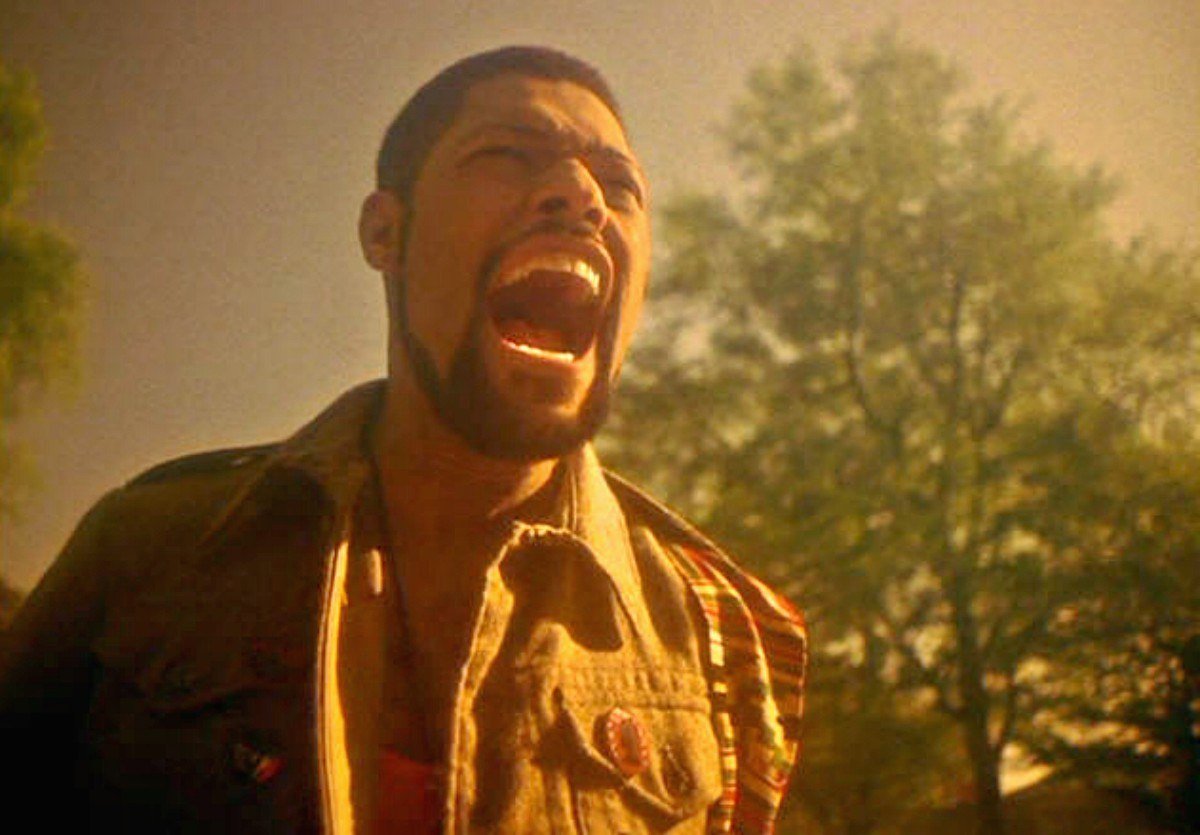
Dickerson, Lee and Thomas would re-team for the features Do the Right Thing, Mo’ Better Blues, Jungle Fever and Malcolm X.
Recommended by ASC members Néstor Alméndros, Vilmos Zsigmond and John Bailey, the cinematographer became a member of the Society in 1990, and was the first African-American to be invited to join.
Dickerson later went on to a successful career as a director, with features including Juice, Tales from the Crypt: Demon Knight, Bones and Never Die Alone; as well as TV series including Third Watch, ER, Weeds, The Wire, Lincoln Heights, Dexter, Treme, The Walking Dead and Bosch.






